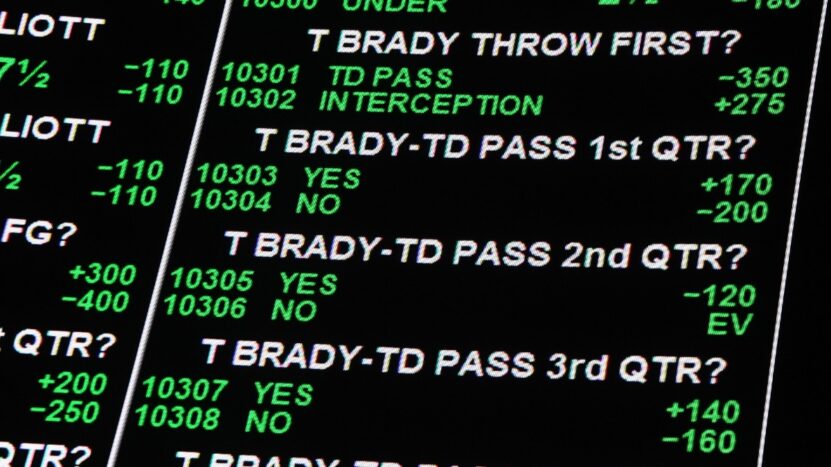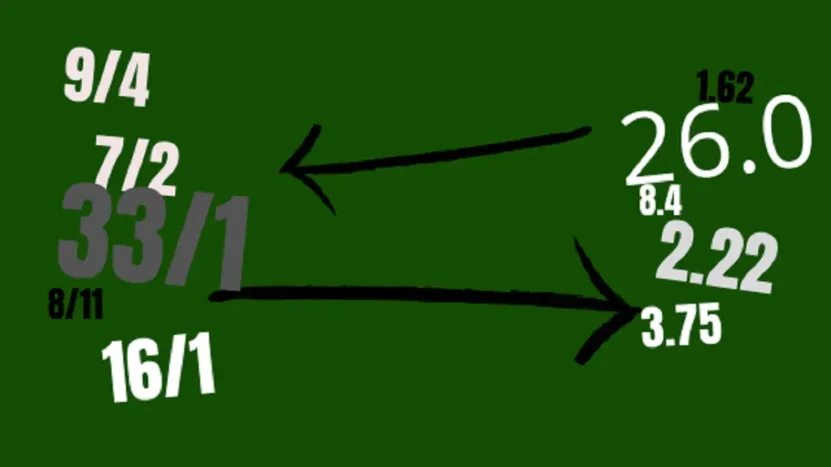Sports betting is a popular pastime for many around the world, providing a thrill that comes from predicting outcomes of games, events, or tournaments. At the heart of sports betting are odds, essentially the probability of an event occurring, translated into a numerical value. Understanding these odds, also referred to as sports betting lines, is crucial for placing successful bets. Without this understanding, you’re essentially gambling blind, leaving everything to chance rather than making informed decisions. This post aims to decode the complexities of reading these lines, making it simple for beginners to navigate the exhilarating world of sports betting.
Understanding Point Spreads

Point spread betting is an integral part of sports betting, primarily utilized in sports like football and basketball. The point spread levels the wagering field when one team is significantly better than the other. This is done by handicapping the favorite and giving the underdog an advantage.
For instance, if Team A is favored by 7 points over Team B (represented as Team A -7), it means Team A must win by more than 7 points for you to win your bet. On the contrary, if you bet on Team B (+7), you win if Team B wins or loses by fewer than 7 points. Thus, point spreads create a balanced environment, making both teams equally attractive from a betting perspective.
Reading Moneyline Odds
Moneyline odds are another common form of betting, especially in sports like baseball and hockey. Unlike point spread, moneyline betting is simply bets on which team will win outright, with odds representing the amount of money you’d win on a $100 bet.
If Team A has odds of -200, they are the favorites, and you would need to bet $200 to win $100. If Team B has odds of +150, they are the underdogs, and a $100 bet would return $150 in winnings. It’s crucial to understand these principles to strategize your betting and anticipate potential returns.
Exploring Over/Under Bets (Totals)
Over/Under bets, also known as totals, is wagering on the total points scored in a game by both teams combined. Sportsbooks set a line, and bettors wager whether the total points will be over or under this line.
For example, in a basketball game, if the total is set at 215.5, and you bet over, you win if the combined score of both teams is 216 or more. Factors such as teams’ offensive and defensive records, player injuries, and weather conditions can influence totals betting decisions.
Fractional and Decimal Odds

Odds can be displayed in different formats, primarily fractional (e.g., 5/1) or decimal (e.g., 6.00). Fractional odds are commonly used in the UK, while decimal odds are prevalent in Europe, Canada, and Australia.
To convert fractional odds to decimal, divide the first number by the second and add 1. For instance, 5/1 becomes 6.00. To calculate potential returns, multiply your stake by the decimal odds. Understanding both formats can be beneficial when betting on international sports or using different platforms.
The Role of Vigorish (House Edge)
Vigorish, often abbreviated as vig, or the house edge, is the commission sportsbooks charge on bets. It’s how they make money, regardless of the betting outcome. Typically, the vig is factored into the odds offered.
For instance, in a point spread bet, both sides usually have odds of -110. This means you need to bet $110 to win $100. The extra $10 represents the vig. It’s crucial to consider the vig when making bets, as it affects your potential profit margin. You need to know before you hit the online casino the next time, and in addition to knowing the house edge, know the good place to gamble such as https://onlinepokiesnz.co.nz/.
Favorite vs. Underdog: Analyzing Odds Differences
Sports betting odds also reflect a team’s perceived chances of winning. The favorite, the team expected to win, will have lower odds, offering less return on a winning bet. Conversely, the underdog, the team expected to lose, will have higher odds, potentially returning more if they win.
However, odds can shift due to various factors like injuries, player suspensions, and even public sentiment. Understanding these dynamics is key to strategically placing bets.
Using Odds to Calculate Potential Payouts

Calculating potential payouts is straightforward once you understand the odds. For moneyline odds of +150, a $100 bet would return $150 in winnings, plus your original $100 stake. For point spread or totals bets with odds of -110, a $110 bet would return $100 in winnings, plus your $110 stake.
Additionally, odds can be used to calculate implied probability, which is the likelihood of a particular outcome happening according to the sportsbook. Using this understanding, you can determine whether a bet offers value.
Line Movement and Its Implications
Line movement refers to odds or point spreads changing in the lead-up to the game. This could be due to various factors, including betting volume, team news, and weather conditions.
While line movements can provide clues about where the money is going, blindly following them can be a pitfall. Rather, informed bettors use line movements as one of many tools to make betting decisions.
Reading Sports Betting Trends and Statistics
Betting involves more than just understanding odds. It’s about making informed decisions, and this often comes from researching team and player statistics, historical trends, and other relevant data.
Numerous online resources provide such information, allowing bettors to analyze and make calculated bets. Look at variables like team form, head-to-head records, player performances, and home/away records to increase your chances of making successful bets.
Bankroll Management and Responsible Betting

Effective bankroll management is the cornerstone of long-term betting success. It involves setting a budget, determining your betting unit size, and sticking to it, win or lose.
Remember, even with the best strategies, losing is a part of betting. Never chase your losses, bet more than you can afford to lose, or let emotions dictate your betting decisions. Responsible betting is about entertainment and not a means to make money.
Conclusion
Reading sports betting lines can initially seem complex, but once you understand the basics, it becomes second nature. This guide provides a foundational understanding, from point spreads and moneyline odds to over/under bets and interpreting line movements. But remember, while understanding odds is important, successful betting also requires research, disciplined bankroll management, and responsible betting habits. Always bet within your means and enjoy the process. With this knowledge in your arsenal, you’re well-equipped to delve into the exciting world of sports betting.
